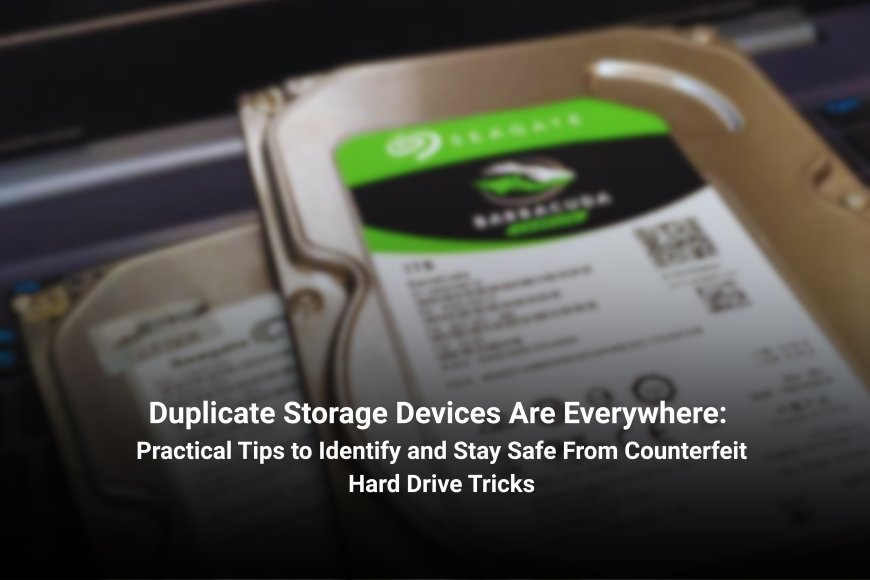Duplicate Storage Devices Are Everywhere: Practical Tips to Identify and Stay Safe From Counterfeit Hard Drive Tricks
The rise of duplicate hard drives is tricking even experienced buyers. Old drives are repackaged as new, making checks on packaging, storage capacity, and pricing essential to avoid scams and protect valuable data.

The problem of duplicate hard drives is getting worse, and recent incidents demonstrate that fake drives are moving to marketplaces all over the world. People frequently take old, used hard drives, put them in new boxes, and sell them as new, high-capacity storage devices. Counterfeit versions of well-known brands are being sold, and they are so well-made that even experienced buyers can be tricked.
One frequent deception that people who make fake things do is offer discarded desktop hard drives as high-capacity surveillance or commercial drives. From the outside, they look real, but on the inside, they are either much smaller than they say they are or have been used a lot. In some situations, these counterfeit disks were used to mine cryptocurrencies before being rebranded to resemble new.
So, how can you protect yourself from falling victim to these scams?
Examine the packaging and labels closely
When you receive a new hard drive, don’t just trust the box, examine it carefully. Authentic drives usually come with proper stickers, original labels, serial numbers, and recent production dates. If the packaging looks tampered with, the manufacturer’s sticker is missing, or the production date is far older than your purchase, it could be a duplicate drive. Taking a few minutes to double-check these details can save you from major problems later.
Verify the actual storage capacity of the drive
Counterfeit hard drives often pretend to have more storage than they really do. For example, a drive sold as 8TB may actually only hold 4TB, with the rest of the space faked through modified firmware. At first glance, the drive will appear normal and even display the advertised size, which can trick buyers. To detect this, you can use free or trusted storage testing software like H2testw, ValiDrive etc. These tools work by writing data to different parts of the drive and then reading it back. If the drive cannot handle data beyond a certain point, the software will reveal the real storage limit. Running such a test ensures you know the genuine capacity of your drive before storing critical files.
Be careful with prices that seem unrealistically low
If you see a high-capacity hard drive priced much lower than usual, treat it as a warning sign. Scammers often trick buyers with flashy discounts on lesser-known marketplaces. It’s always safer to buy from reliable and authorized sellers, even if the price is slightly higher.
Conclusion
It has grown harder and harder to find duplicate hard drives. Those selling imitations aren't simply making fake packaging anymore; they're also changing the drive's internal records, such its usage history and health reports, to make outdated drives look new. This means that you can't just rely on software checks anymore. The best way to remain secure is to take a number of steps, such only buying from trusted sellers, checking the packing and labels carefully, making sure the storage capacity is what it says it is, and being on the lookout for prices that are too affordable. Taking a little additional care when you buy something can keep your important data from being stored on fake disks that don't work.
Information referenced in this article is from XDA







